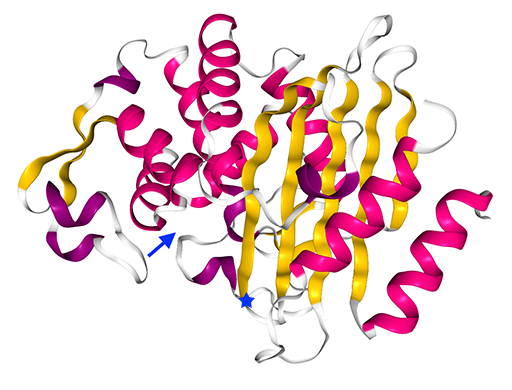4.3 Mutations in CTX-M-type ESBLs
CTX-M-type ESBLs preferentially act on certain cephalosporin antibiotics.

The specificity of CTX-M-type ESBLs can be modified by point mutations which improve the specificity of CTX-M-type ESBLs for ceftazidime. One of these mutations is indicated on Figure 14 (Cartelle et al., 2004). Altering this amino acid allows the bulkier ceftazidime to be more easily accommodated in the β-lactam binding site (Chen et al., 2005). Infections caused by bacteria producing this mutated version of the CTX-M-type ESBL are not treatable with ceftazidime. This CTX-M variant has been isolated from clinical strains of E. coli (Cartelle et al., 2004) and has probably been selected for the increasing use of ceftazidime in clinical practice.
